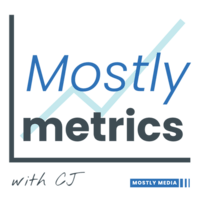Mostly metrics

The playbook I wish I had to launch and scale an embedded payments product
Feature Story
A TACTICAL PLAYBOOK FOR ADDING PAYMENTS TO YOUR PRODUCT
Intro
Gosh, people are so greedy these days. All they ask me lately is:
“How can I add payments to my SaaS product to drive more revenue and increase net dollar retention?”
Well, today we’ve got the playbook for you.
Here’s what we’ll cover:
Part I: What makes a company well-positioned to offer payments?
Part II: How much can I make by adding payments?
Part III: What adoption rate can I expect?
Part IV: What are the other benefits of adding payments?
Part V: What’s the diff: payment processing vs embedded payments
Part VI: Where can I expand to from embedded payments?
Part VII: What are examples of companies who have done this well?
Let’s dive in so that you can let your NDR ripppp and delight your customers by offering that swipey swipey.
Part I: What makes a company well-positioned to offer payments?
Before we get into “how much” we need to investigate “why me?”
Not every company should get into payments. There are a ton of bad candidates in the B2B SaaS world who don’t have a realistic shot of being in the payments flow and adding value.
For example, if you're a data analytics platform and your customer is a data analyst, then it's not likely they're going to be processing a payment. There's no point trying to insert yourself in a process that’s not taking place.
“Well, is there value? Am I adding value to our customers by actually providing the service?”
Your first clue is when there is actually a payment somewhere in the value chain. Good examples include:
Software for non profits who process donations
Software for auto mechanics who process customer invoices
Software for physical therapists, chiropractors, dentists, psychiatrists who process copays
Basically anywhere there is a point of sale machine on the receptionists desk, and you are providing a software somewhere in that process.
If you’ve gotten relatively comfortable with the use case, it’s then imperative to start with the customer journey and the customer experience. This sounds obvious, yet many companies start with their position as the company, and how great it will be for them, instead of how and when the customer will interact with it.
“How are your customers processing payments today? Is that how they run their business? Is your software where they go to help run their business? And then, how are they currently doing it?”
You need to literally walk through a map of the customer journey and ask where the payment occurs, and if you are in a position to win that strategic high ground.
In all likelihood, there's a variety of ways that they're doing it. And most of them are probably going to be quite inefficient if they're doing it outside of your platform, which is where they go to run their business anyway.
As an example, Andrew Mosawi, who’s started and exited a number of companies in the payments space, noticed an opportunity in the non profit arena:
That's actually how our business started - we received an annual receipt from a charity, and it had 12 points of sale receipts stapled to the annual gift receipt.
Someone was keying in each payment, printing it, and mailing it to us.
And so that was the spark for us to say,
“Actually, that's nuts, we can improve that, and we can automate it.”
So follow the money in a real way. How do your customers process transactions:
Cash
Paper Check
Credit Card
ACH
And then using that, reverse engineer whether or not your solution has the right to own that transaction, and whether or not you’re in those flow of funds. Once you've done that, then you can start to sketch out the monetization model and TAM.
Part II: How Much Can I Make By Adding Payments?
Subscribe to our premium content to read the rest.
Become a paying subscriber to get access to this post and other subscriber-only content.
UpgradeYour subscription unlocks:
- In-depth “how to” playbooks trusted by the most successful CFOs in the world
- Exclusive access to our private company financial benchmarks
- Support a writer sharing +30,000 hours of on-the-job insights

